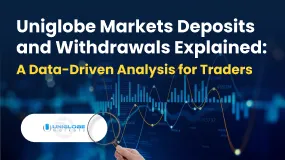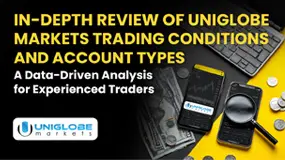简体中文
繁體中文
English
Pусский
日本語
ภาษาไทย
Tiếng Việt
Bahasa Indonesia
Español
हिन्दी
Filippiiniläinen
Français
Deutsch
Português
Türkçe
한국어
العربية
New Year, New Surge: Will Oil Prices Keep Rising?
Abstract:As of the writing of this article (January 2), oil prices stand at $71.88 per barrel. Investors need to continue monitoring whether the supply and demand dynamics will continue to push prices further up.

The outlook for crude oil supply in 2025 remains uncertain, but the short-term increase in demand has driven oil prices higher.
Oil price fluctuations are influenced by multiple factors, primarily including global supply and demand dynamics, geopolitical risks, crude oil inventory levels, and OPEC+ policies. Since the beginning of last year, OPEC+ has implemented production cuts, which have helped support oil prices.
However, between July and September, oil prices fell sharply due to a de-escalation in geopolitical risks, especially with the progress of the Israel-Palestine ceasefire talks, as well as capital market shocks that suppressed the valuations of risk assets like crude oil.
Geopolitical Influence
On the supply side, geopolitical tensions have provided some support for oil prices. If geopolitical tensions ease in 2025, this support could weaken, and oil prices may face downward risks. Investors should remain cautious about the potential for prices to drop again.
This week, attention should be focused on the EIA (U.S. Energy Information Administration) inventory data. According to the data released on December 31, U.S. oil production increased by 259,000 barrels per day in October, reaching a record high of 13.46 million barrels per day, driven by a surge in demand—the strongest since the pandemic.
The EIA forecasts that U.S. oil production will rise to a new record of 13.52 million barrels per day this year. However, some analysts believe that supply could tighten this year, particularly due to the policies of President-elect Trump, including sanctions on Iranian oil exports, which may provide short-term support for oil prices.

Impact of Fed Rate Cuts
At the same time, according to CMEs “FedWatch” tool, the probability of the Federal Reserve keeping rates unchanged in January 2025 is 88.8%, while the chance of a 25 basis point rate cut is 11.2%.
Typically, when the Federal Reserve cuts rates, the U.S. dollar depreciates, which in turn tends to push oil prices higher. Rate cuts increase market liquidity, lower borrowing costs, and stimulate economic demand, thereby driving up both oil demand and prices.
However, oil prices will still be affected by a combination of factors, including global economic conditions and geopolitical risks, so a comprehensive analysis of various dynamics is necessary.

Disclaimer:
The views in this article only represent the author's personal views, and do not constitute investment advice on this platform. This platform does not guarantee the accuracy, completeness and timeliness of the information in the article, and will not be liable for any loss caused by the use of or reliance on the information in the article.
Read more

Check Yourself: The Costly Trading Habits Every Trader Must Fix
Are the trading habits you barely notice the very ones quietly destroying your profits, and could a single overlooked mistake be costing you far more than you realise?

Scandinavian Capital Markets Exposed: Traders Cry Foul Play Over Trade Manipulation & Fund Scams
Does Scandinavian Capital Markets stipulate heavy margin requirements to keep you out of positions? Have you been deceived by their price manipulation tactic? Have you lost all your investments as the broker did not have risk management in place? Were you persuaded to bet on too risky and scam-ridden instruments by the broker officials? These are some burning issues traders face here. In this Scandinavian Capital Markets review guide, we have discussed these issues. Read on to explore them.

Uniglobe Markets Deposits and Withdrawals Explained: A Data-Driven Analysis for Traders
For any experienced trader, the integrity of a broker isn't just measured in pips and spreads; it's fundamentally defined by the reliability and transparency of its financial operations. The ability to deposit and, more importantly, withdraw capital seamlessly is the bedrock of trust between a trader and their brokerage. When this process is fraught with delays, ambiguity, or outright failure, it undermines the entire trading relationship. This in-depth analysis focuses on Uniglobe Markets, a broker that has been operational for 5-10 years and presents itself as a world-class trading partner. We will move beyond the marketing claims to scrutinize the realities of its funding mechanisms. By examining available data on Uniglobe Markets deposits and withdrawals, we aim to provide a clear, evidence-based picture for traders evaluating this broker for long-term engagement. Our investigation will be anchored primarily in verified records and user exposure reports to explain the Uniglobe Mar

In-Depth Review of Uniglobe Markets Trading Conditions and Account Types – An Analysis for Traders
For experienced traders, selecting a broker is a meticulous process that extends far beyond headline spreads and bonus offers. It involves a deep dive into the fundamental structure of a broker's offering: its regulatory standing, the integrity of its trading conditions, and the flexibility of its account types. Uniglobe Markets, a broker with an operational history spanning over five years, presents a complex case study. It offers seemingly attractive conditions, including high leverage and a diverse account structure, yet operates within a regulatory framework that demands intense scrutiny. This in-depth analysis will dissect the Uniglobe Markets trading conditions and account types, using data primarily sourced from the global broker inquiry platform, WikiFX. We will explore the Uniglobe Markets minimum deposit, leverage, and account types to provide a clear, data-driven perspective for traders evaluating this broker as a potential long-term partner.
WikiFX Broker
Latest News
Gratitude Beyond Borders: WikiFX Thank You This Thanksgiving
MH Markets Commission Fees and Spreads Analysis: A Data-Driven Breakdown for Traders
Alpha FX Allegations: Traders Claim Account Blocks, Withdrawal Denials and Security Breaches
How to Become a Profitable Forex Trader in Pakistan in 2025
CFTC Polymarket Approval Signals U.S. Relaunch 2025
Zipphy Exposed: No Valid Regulation, Risk Warning
KEY TO MARKETS Review: Are Traders Facing Withdrawal Delays, Deposit Issues & Trade Manipulation?
FCA Consumer Warning – FCA Warning List 2025
Australia’s Fraud-Intel Network Exposes $60M in Scams
Malaysia’s SkyLine Guide Top 25 Brokers Are Out!
Currency Calculator



